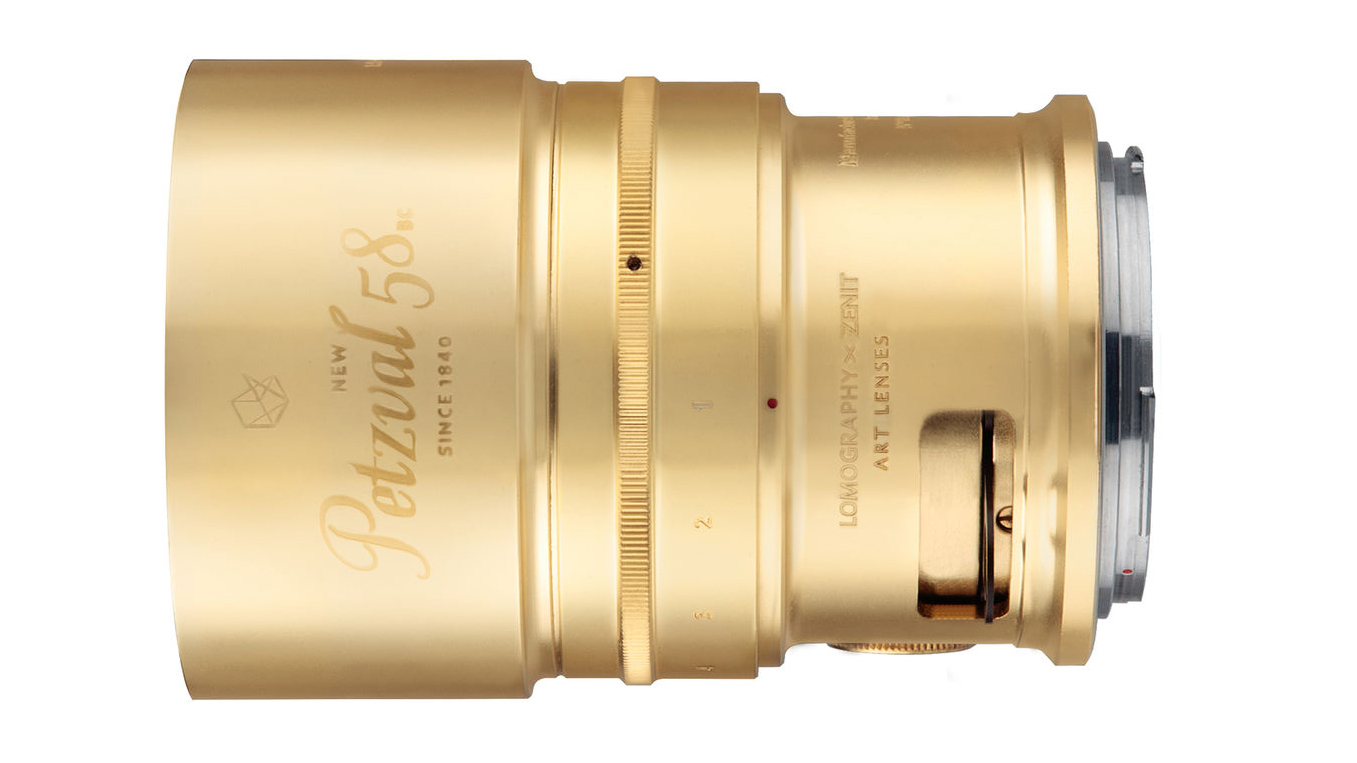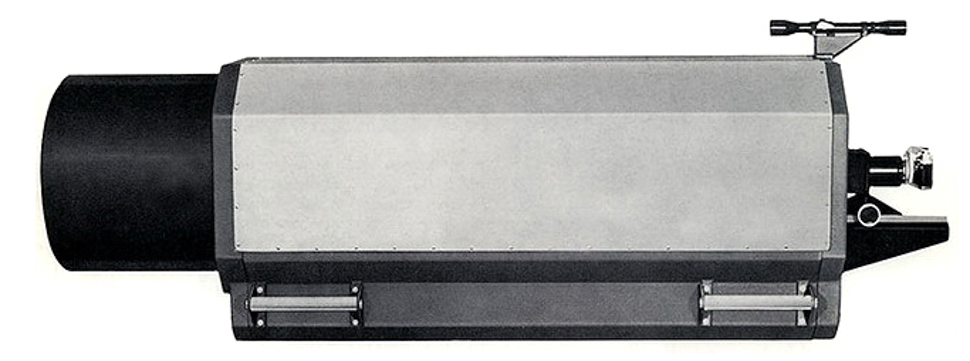8 bizarre lenses you can use with DSLRs and mirrorless cameras
From lenses that see behind themselves to lenses that weigh as much the average adult male, these are some of the oddest optics around

Bored of convention? These eight lenses stray from the herd in some way, but you can still use them with everyday DSLRs and compact systems cameras – with one possible exception ...
1. Laowa Relay 24mm f/14 2x macro lens
Under the brand name Laowa, Venus Optics has largely focused on crafting affordable alternatives to more mainstream lenses (such as this one). Sure, they may not be as elegantly designed as the ones they go up against, but they adhere to a fairly conventional design nonetheless. This one? Not so much. It offers a 2:1 magnification ratio and is designed to allow macro photographers to get to subjects in awkward places, with its waterproof cap allowing for it to be dipped safely underwater and LED lights at its front for extra illumination. First seen at the 2016 Photokina show, the plan was to release the lens in both Canon and Nikon mounts, but it doesn't seem to have been made available yet. Keen to see what it's capable of in the meantime? Check out the above video.
2. Canon EF 1200mm f/5.6L USM

Canon claimed this was the world’s largest interchangeable SLR AF lens at the time of its release, and it remains fairly beastly today. According to Techradar, it was originally designed for the FD mount, but had its mount converted to the current EF system after the 1984 Olympic Games in Los Angeles. If you don't find it reaches quite as far as you need it to, you can even use it in conjunction with Canon's EF 1.4x or 2x Extenders, which have the effect of changing focal length and aperture to 1700mm f/8 and 2400mm f/11 respectively. It weighs 16.5kg, and one example that surfaced last year had an asking price of £99,00, but if you're spending this kind of money it might be worth your while haggling to see if you can also get yourself a nice sturdy tripod thrown in.
3. Sigma 200-500mm f/2.8 APO EX DG

Not many lenses sport their own integrated carrying handle, battery and LCD screen, but then not many lenses look like this. Always a popular attraction at photo shows, the Sigma APO 200-500mm f/2.8 is available for users of Canon, Nikon and Sigma DSLRs who need an aperture of f/2.8 at 500mm, and who are prepared to lug this 15.7kg/34.6lb monster around to get it. As with the Canon lens above, if it’s not quite powerful enough for you out of the box, you can use it with a 2x teleconverter that’s finished in the same green to provide a 400-1000mm f/5.6 range to work with. It’s all yours for just under £15K/$26,000.
4. Nikon Fisheye-Nikkor 6mm f/2.8
The lens whose 220º angle of view is so wide that it that can actually see behind itself, this monstrous fisheye lens was first unveiled in 1970, and released two years later, and was designed to work with F-mount bodies. It's been crafted with a 12-element, 9-group optical construction, which includes a massive bulbous front element, and weighs 65.2kg/144lbs. The price? A few years ago, a mint-condition example was reported to have sold an anonymous buyer for a cool £100k.
5. Holga Turret Lens (HLT-C)

Plastic camera manufacturer Holga also happens to make accessories for more commonly available systems, and this is perhaps one of the strangest. Available for Canon, Nikon, Pentax and Sony systems, this contraption consists of a base unit with a built in lens, and a couple of turrets that are attached via magnets. Each turret boasts nine effects, with one of these being a collection of coloured filter effects and the other splitting images into multiples, allowing for close focus and so on. You just pop the turret on the base unit and turn it to access the different effects. It's low availability suggests it's gone out of production, but you can still occasionally find examples on eBay for very little.
6. Olympus Body Cap Lens 15mm F8

The rise of mirrorless cameras has meant that we’ve seen a lot more pancake lenses in recent years, as manufacturers have tried to show off just how small you can get a functioning interchangeable-lens camera systems. This three-element Body Cap lens from Olympus, however, makes the average pancake lens look porky; it’s just 9mm thick and weighs 22g/0.8oz. Announced in 2012, the lens is compatible with all Micro Four Thirds cameras, on which it delivers and effective focal length of 30mm. Unsurprisingly, it’s doesn't have the space for any kind of autofocus system, being a manual only affair with focusing down to 3cm from the subject, and you don't get any control over aperture either, which is simply f/8 at all times. Still, unlike most of the others here, it's pretty much the cheapest native lens you can buy for the Micro Four Thirds system. If you like what you see but need something a little wider, you'll be pleased to know that it was followed up by the equally wacky 9mm Fisheye Body Cap lens.
The best camera deals, reviews, product advice, and unmissable photography news, direct to your inbox!
7. Lomography Petzval 85mm F2.2

Portraits used to be something of a pain to capture. Thanks to the lack of sensitivity of the photographic materials at the time, and apertures simply not being wide enough to admit enough light, they used to take minutes. The 19th century Petzval lens design was characterised by a relatively fast aperture – at least at the time – together with soft corners and vignetting, which made portraiture far more practical. This 2014 revival from plastic-camera-company Lomography, which is available in Canon EF and Nikon F mounts, sought to recreate that classic design inside and out, with the same optical construction and a smart, brass barrel. Changing the aperture happens via the Waterhouse stop system, which sees small metal plates dropped into a slit in the barrel, while (manual) focusing is performed by turning a small knob on its side. The lens attracted much interest and enough funds to bring it into production, and it was followed up in by the New Petzval 58 Bokeh Control Art Lens.
8. Canon 5200mm f/14

Ok, we admit this one is quite a stretch. There's so little credible information about this lens it's difficult to know whether to believe it actually exists, so we're forced to use a little conjecture here. It appears as though it was designed at some point in the sixties, although it's unclear whether it was designed for Canon's R-mount or the subsequent FL mount, the latter being the precursor to the FD mount. Even Canon's website misses this one out – which isn't too surprising for a lens designed for non-civillian use – but if it did sport the FL mount it should theoretically possible to mount it on an EF body through an adapter. Weighing 100kg/220lb and said to be the world's largest SLR optic, it uses a mirror design to help keep size down – and, as I'm sure you'll agree, it's been a success. Exposure is controlled through drop-in ND filters (you probably won't want to just drop them, though) and it was reported to have ended up on eBay back in 2000, with a starting bid of $45,000, although it seems nobody was brave enough to make an offer. Having trouble getting a sense of scale? Have a look at the right-hand-side of the lens and try see if you can spot the camera to which it's mounted.
Honorable mention: ZEISS Apo Sonnar T* 1700 mm F4

You probably won’t find this one in Jessops. This doesn't make the cut as it's designed for a medium-format Hasselblad system rather than a more mainstream DSLR or CSC, but it's definitely an oddity worth mentioning. This is the ZEISS Apo Sonnar T* 4/1700mm, a super telephoto lens announced back in 2006. Despite only having 15 elements in its construction, it weighs 256kg and has the honour of being the largest telephoto lens designed for non-military use. It's pictured here with the Hasselblad 6x6 medium-format camera and is, unsurprisingly, only made to order.
Read more: 20 things you never knew about Canon lenses
The former editor of Digital Camera World, "Matt G" has spent the bulk of his career working in or reporting on the photographic industry. For two and a half years he worked in the trade side of the business with Jessops and Wex, serving as content marketing manager for the latter.
Switching streams he also spent five years as a journalist, where he served as technical writer and technical editor for What Digital Camera before joining DCW, taking on assignments as a freelance writer and photographer in his own right. He currently works for SmartFrame, a specialist in image-streaming technology and protection.

